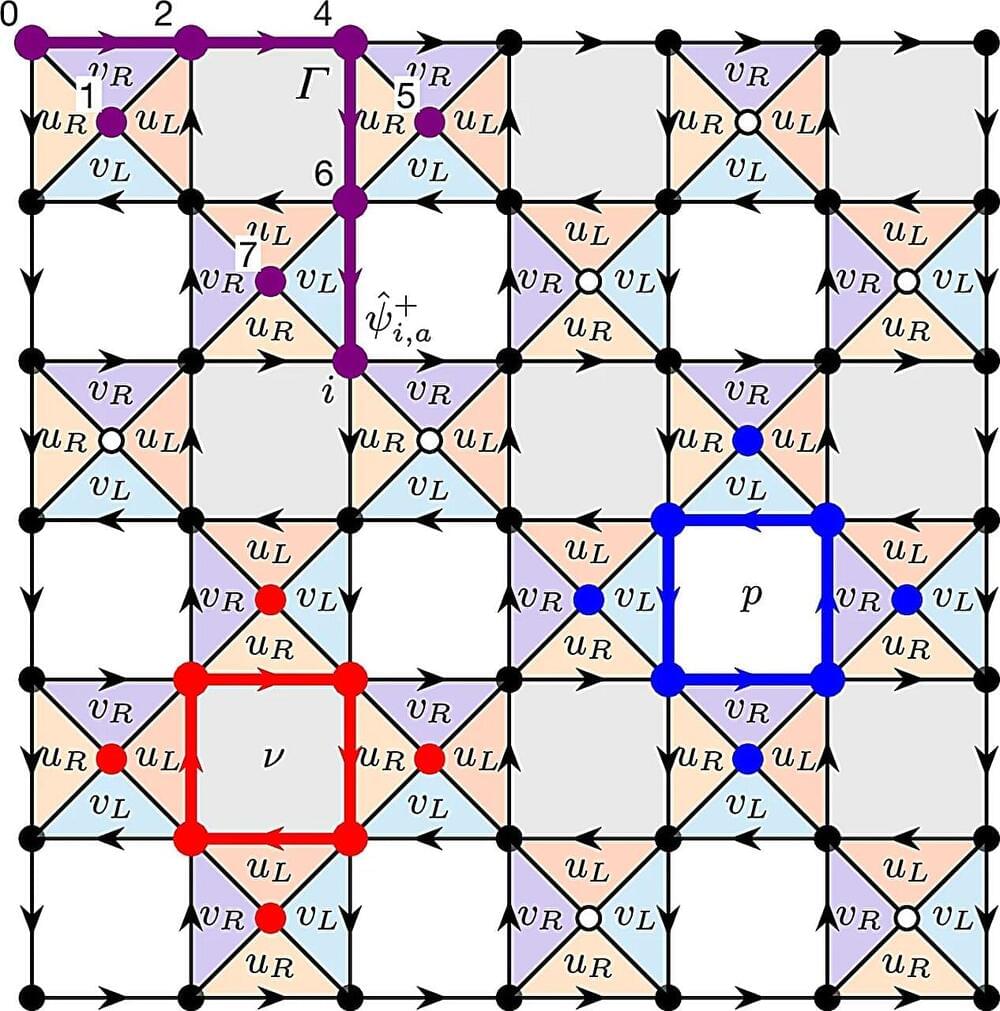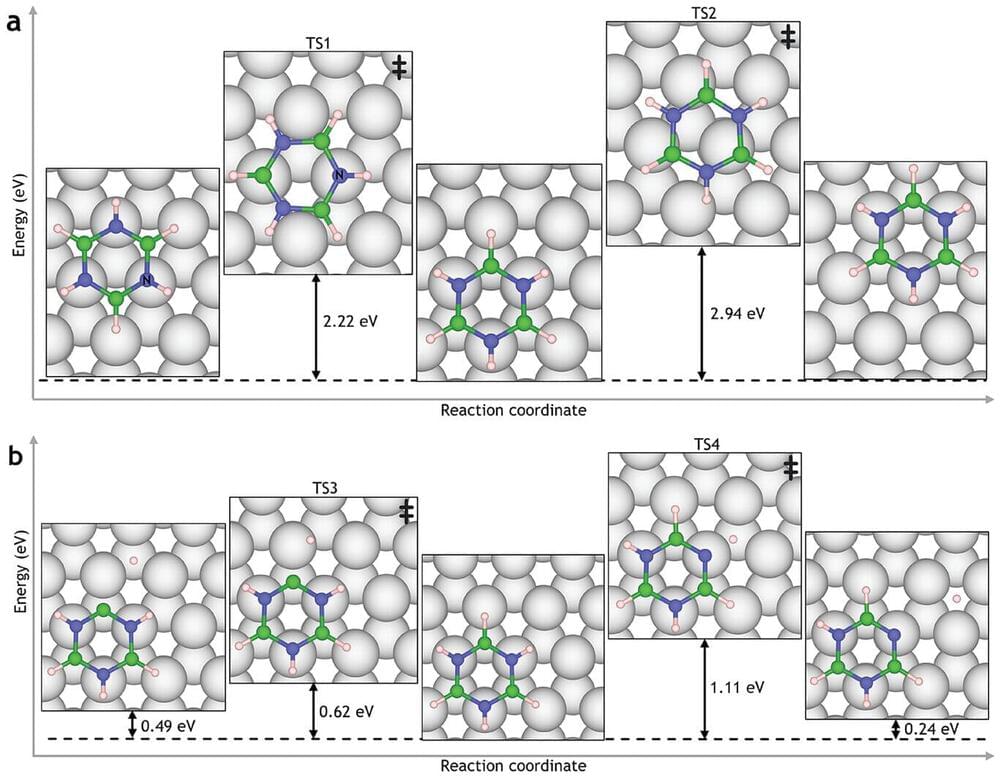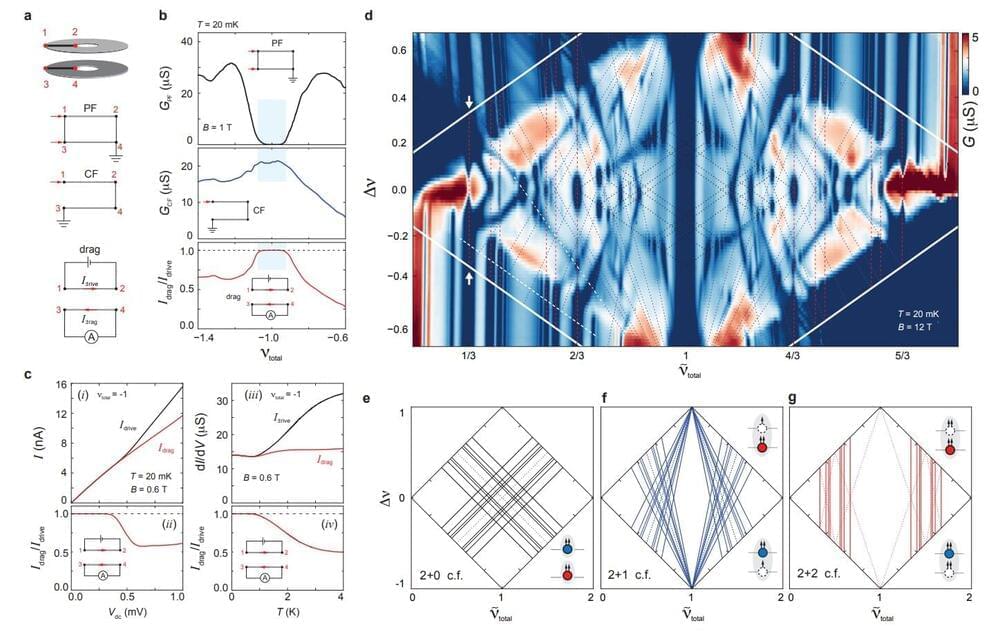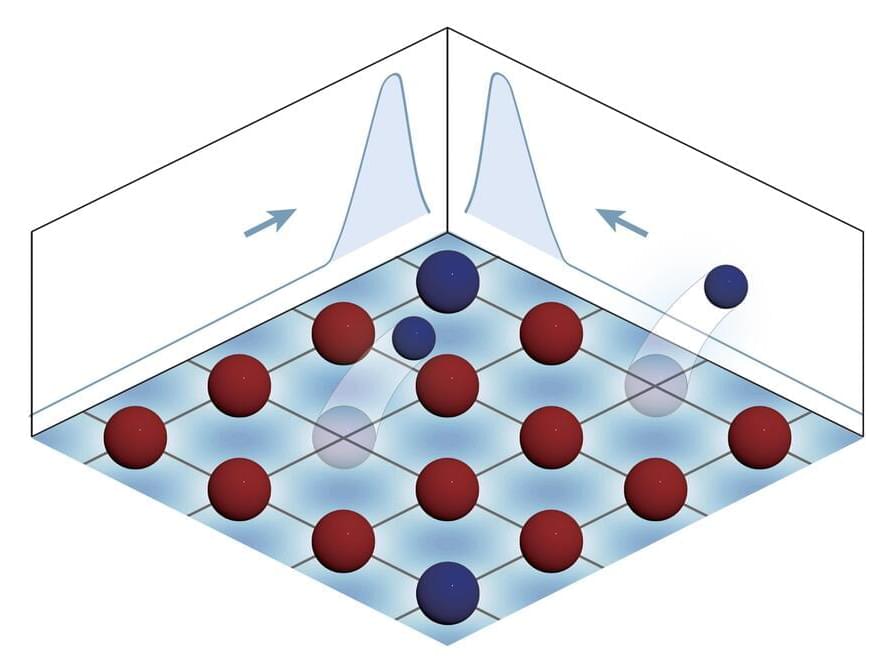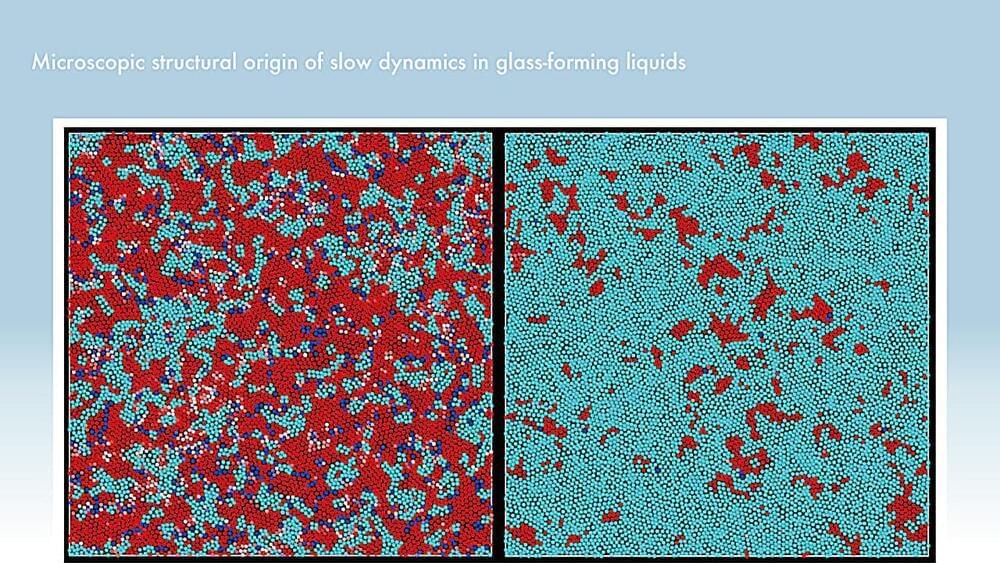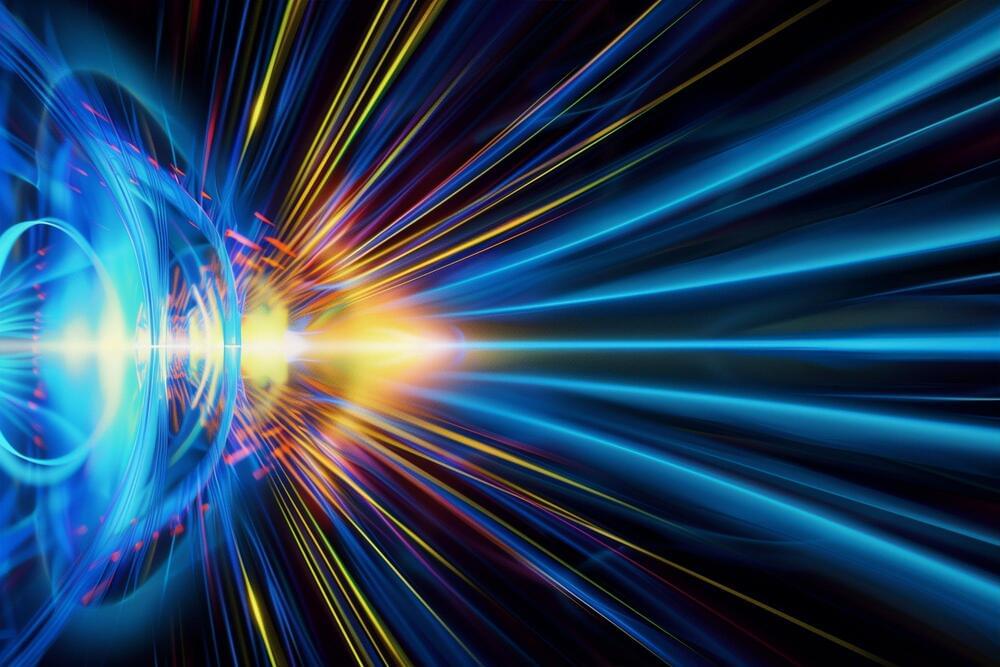Scientists at Penn Engineering have developed a quantum sensing method that detects signals from individual atoms.
Category: particle physics – Page 29
From the early days of quantum mechanics, scientists have thought that all particles can be categorized into one of two groups—bosons or fermions—based on their behavior.
However, new research by Rice University physicist Kaden Hazzard and former Rice graduate student Zhiyuan Wang shows the possibility of particles that are neither bosons nor fermions. Their study, published in Nature, mathematically demonstrates the potential existence of paraparticles that have long been thought impossible.
“We determined that new types of particles we never knew of before are possible,” said Hazzard, associate professor of physics and astronomy.
Decoding 2D material growth: White graphene insights open doors to cleaner energy and more efficient electronics
Posted in chemistry, computing, nanotechnology, particle physics | Leave a Comment on Decoding 2D material growth: White graphene insights open doors to cleaner energy and more efficient electronics
A breakthrough in decoding the growth process of hexagonal boron nitride (hBN), a 2D material, and its nanostructures on metal substrates could pave the way for more efficient electronics, cleaner energy solutions and greener chemical manufacturing, according to new research from the University of Surrey published in the journal Small.
Only one atom thick, hBN—often nicknamed “white graphene”—is an ultra-thin, super-resilient material that blocks electrical currents, withstands extreme temperatures and resists chemical damage. Its unique versatility makes it an invaluable component in advanced electronics, where it can protect delicate microchips and enable the development of faster, more efficient transistors.
Going a step further, researchers have also demonstrated the formation of nanoporous hBN, a novel material with structured voids that allows for selective absorption, advanced catalysis and enhanced functionality, vastly expanding its potential environmental applications. This includes sensing and filtering pollutants—as well as enhancing advanced energy systems, including hydrogen storage and electrochemical catalysts for fuel cells.
The LUX ZEPLIN (LZ) Dark Matter experiment is a large research effort involving over 200 scientists and engineers at 40 institutions worldwide. Its key objective is to search for weakly interacting massive particles (WIMPs) by analyzing data collected by the LZ detector, situated at the Sanford Underground Research Facility in South Dakota.
The LZ Collaboration recently released the results of the first experimental run of the LZ dark matter experiment. These results, published in Physical Review Letters, set new constraints on the interactions between dark matter and other particles, which could inform future searches for weakly-interacting dark matter candidates.
“There is no reason to believe that dark matter will interact with regular matter in the simplest way, so it is important to consider more complex interactions,” Sam Eriksen, co-author of the paper, told Phys.org.
Amid the many mysteries of quantum physics, subatomic particles don’t always follow the rules of the physical world. They can exist in two places at once, pass through solid barriers and even communicate across vast distances instantaneously. These behaviors may seem impossible, but in the quantum realm, scientists are exploring an array of properties once thought impossible.
In a new study, physicists at Brown University have now observed a novel class of quantum particles called fractional excitons, which behave in unexpected ways and could significantly expand scientists’ understanding of the quantum realm.
“Our findings point toward an entirely new class of quantum particles that carry no overall charge but follow unique quantum statistics,” said Jia Li, an associate professor of physics at Brown.
A research team led by The Hong Kong University of Science and Technology (HKUST) has achieved a groundbreaking quantum simulation of the non-Hermitian skin effect in two dimensions using ultracold fermions, marking a significant advance in quantum physics research.
Quantum mechanics, which typically considers a well-isolated system from its environment, describes ubiquitous phenomena ranging from electron behavior in solids to information processing in quantum devices. This description typically requires a real-valued observable—specifically, a Hermitian model (Hamiltonian).
The hermiticity of the model, which guarantees conserved energy with real eigenvalues, breaks down when a quantum system exchanges particles and energy with its environment. Such an open quantum system can be effectively described by a non-Hermitian Hamiltonian, providing crucial insights into quantum information processing, curved space, non-trivial topological phases, and even black holes. Nevertheless, many questions about non-Hermitian quantum dynamics remain unanswered, especially in higher dimensions.
Glass might seem to be an ordinary material we encounter every day, but the physics at play inside are actually quite complex and still not completely understood by scientists. Some panes of glass, such as the stained-glass windows in many medieval buildings, have remained rigid for centuries, as their constituent molecules are perpetually frozen in a state of disorder.
Similarly, supercooled liquids are not quite solid, in the sense that their fundamental particles do not stick to a lattice pattern with long-range order, but they are also not ordinary liquids, because the particles also lack the energy to move freely. More research is required to reveal the physics of these complex systems.
In a study published in Nature Materials, researchers from the Institute of Industrial Science, the University of Tokyo have used advanced computer simulations to model the behavior of fundamental particles in a glassy supercooled liquid. Their approach was based on the concept of the Arrhenius activation energy, which is the energy barrier a process must overcome to proceed.
The intricate relationship between quantum mechanics and classical physics has long puzzled scientists. Quantum mechanics operates in a bizarre world where particles can exist in multiple states simultaneously, a concept known as superposition. However, this principle appears to break down in the macroscopic realm.
Planets, stars, and even the universe itself don’t exhibit such superpositions, creating a significant challenge in understanding how the universe transitions from quantum to classical behavior.
At the heart of this enigma is the question: how does the universe, if fundamentally quantum, adhere to classical laws like general relativity? This puzzle has led to groundbreaking work by researchers such as Matteo Carlesso and his colleagues at the University of Trieste.
Beyond fermions and bosons: unveiling new particle behaviors in mechanics.
In the world, particles traditionally fall into two categories: fermions (like electrons) and bosons (like photons), each obeying distinct exchange rules. These “exchange statistics” shape the behaviors of particles, from the structure of atoms to the glow of lasers. In two dimensions, a peculiar third type, called anyons, has been theorized and observed, adding a twist to this framework. But could there be even more possibilities?
This study ventures into uncharted territory by revisiting “parastatistics,” an idea from theory that goes beyond fermions and bosons. Previously dismissed as merely theoretical and equivalent to the known particle types, parastatistics now emerges in a new light. The researchers reveal that particles obeying non-trivial parastatistics can exist in real physical systems and behave in fundamentally different ways. These “paraparticles” follow unique rules of exclusion, resulting in strange and exotic thermodynamic behaviors unlike any seen in fermions or bosons.
To bring this concept to life, the team developed a mathematical framework for paraparticles, showing how they naturally fit within the broader universe. They designed solvable models where paraparticles arise as quasiparticles—tiny, particle-like excitations in materials—observable through their distinct exchange behavior. Remarkably, these models work in both one and two dimensions, demonstrating the tangible potential of paraparticles in real-world systems.
The findings hint at exciting possibilities: a new class of quasiparticles in condensed matter physics and, perhaps more provocatively, the existence of elementary particles governed by entirely novel statistics. This discovery could expand our understanding of the world and open the door to unimagined phenomena in both theory and experiment.
Scientists at Brown University have discovered a new class of quantum particles known as fractional excitons, which exhibit both fermion and boson characteristics.
This groundbreaking finding could pave the way for new phases of matter and enhance quantum computing by providing unique ways to manipulate quantum states.
Novel Quantum Particles Discovered

